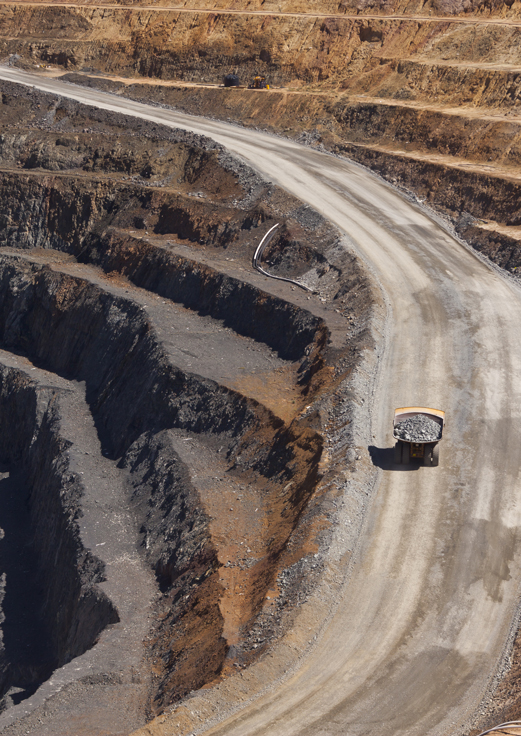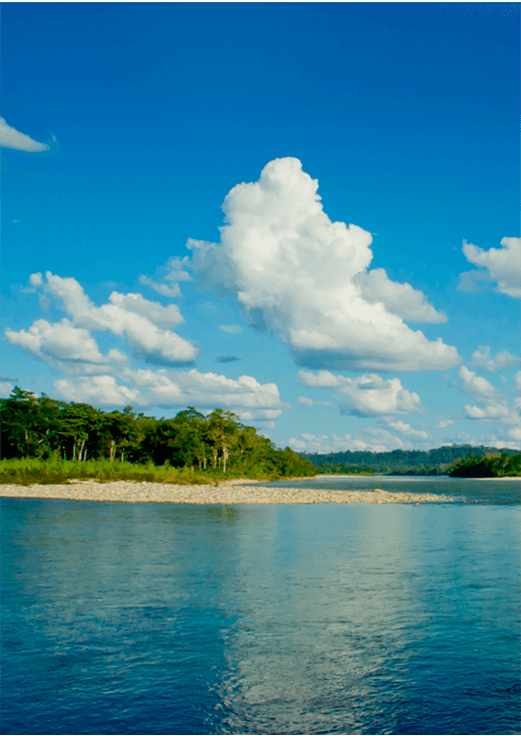
Geography
Peru occupies the west central area of South America, on the shores of the Pacific Ocean. It is the third largest country on the continent, covering 1,285,215.6 square kilometers (496,211.51 m squared), a surface greater than the combined territories of Spain, France and Germany. Peru is divided into three geographic regions:
-
Coast (12%)
A warm climate along the coastline that includes superb natural beaches, mysterious deserts, fertile river valleys and exotic dry woodlands.
-
Highlands (28%)
A region of varied terrain and temperate climate, dominated by the snow-capped peaks of the Andes rising above 6,000 masl, the highest of which is Mount Huascaran, at 6,768 masl (22,206 ft). It includes deep canyons such as the Colca and Cotahuasi, the two deepest on the planet; and high plains like the plateau of Collao, on the shores of the world’s highest navigable lake, Titicaca, at 3,810 masl (12,500 ft).
-
Jungle or Amazonia (60%)
A region of tropical climate, lush vegetation, and abundant fauna that is part of one of the planet’s largest natural reserves. It is here that the confluence of the Maranon and Ucayali rivers forms the Amazon River, the largest in the world.
Peru is organized into 24 regions (Amazonas, Ancash, Apurimac, Arequipa, Ayachuco, Cajamarca, Cusco, Huancavelica, Huanuco, Ica, Junin, La Libertad, Lambayeque, Lima-Provinces, Loreto, Madre de Dios, Moquegua, Pasco, Piura, Puno, San Martin, Tacna, Tumbes, and Ucayali), besides Callao Constitutional Province.
Climate
Temperatures and atmospheric cycles vary from one region to another. Coast: There are two clearly-defined seasons on the coast: summer (December-march), when temperatures can reach 27 degrees C (80 degrees F); and winter (April-November), which is very damp and chilly, with temperatures falling to 12 degrees C (53 F). Although it rarely rains on the coast, mist and drizzle are common during the winter. The far north coast enjoys sunshine all year round, with temperatures reaching 35 C (95 F) in the summer.
-
Highlands
The climate is dry and temperate, with two clearly defined seasons: the dry season (April-October), with sunny days, very cold nights, and scant rainfall (the ideal time to visit the Andes), and the rainy season (December-March). There is a sharp contrast in temperature between sun and shade, and temperatures can often vary widely during the same day, from 20C (68F) to 2C (35 F).
-
Jungle
The climate is tropical and humid. There are two well-defined seasons: the summer or dry season (April to October) with sunny days and temperatures above 30C (86 F), and the rainy season (November-March) with frequent showers and high river levels.


Demographic Information
Peru has approximately 32 million inhabitants. The coast shelters 55.9% of the total population, the highlands 29.6% and the jungle 14.5%. The population is mostly mixed, urban, and speaks Spanish, but there are two important minorities: Andean populations, divided in the Quechua and Aymara language families and Amazon populations divided in 14 language families and 42 ethnic groups.

